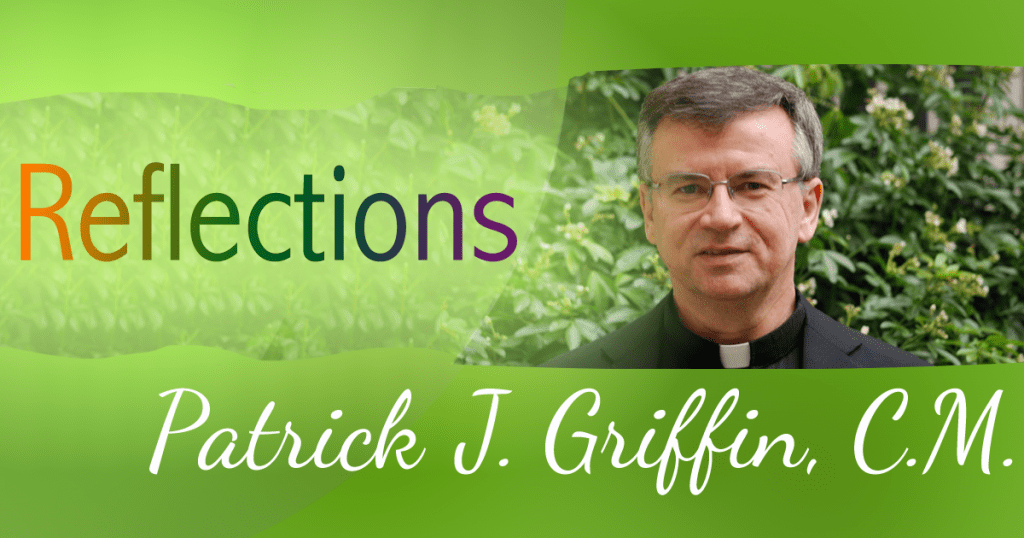
A Vincentian View
The Transfiguration
“A Sense of Perspective”
When one travels on a plane, one sees that there are different kinds of people. I can identify two groups: there are “window people” and there are “aisle people”—I do not think that there is any such thing as “middle of the row people.” Some people like to sit on the aisle so that they can get up and move around the cabin easily without having to climb over others. Sometimes people are nervous about sitting at the window because they do not like to look out and see that they are 6 miles above the surface of the earth—that is a long way down! I am an absolutely dedicated window person. I do not like to have people climbing over me nor to get constantly bumped by people going up and down the aisle. But most of all, I like to look out the window. I like to watch the take-off and landing, and, when the day is clear, I like to watch the earth underneath. I enjoy the unique perspective on mountains and roads and rivers and homes. It makes me see things differently.
We do not need to travel in a plane to get that change of perspective. It can happen when we go up a high building, or look at aerial photos on Google World, or climb a mountain as the apostles do with Jesus in the Gospel for this past Sunday. But, the perspective of the disciples does not change just because of the elevation, but because of the way in which Jesus reveals himself to them. The mountain offers a symbolic location for this extraordinary vision and message.
First of all, they look at Jesus in a new way. The Gospel tells us that “while [Jesus] was praying his face changed in appearance and his clothing became dazzling white.” This experience of the transfiguration does not change Jesus himself, but enables the disciples to recognize him in truth. He does not change as much as their way of viewing him changes. The brilliance of his clothes and features proclaims the glory of the Lord, and astounds the disciples. They have a different perspective on him. They see him in a new way.
Then, the Gospel tells us, “behold, two men were conversing with [Jesus], Moses and Elijah.” These two figures represent the Law and the Prophets, which is to say the Scripture of Israel, and they converse with Jesus. The situation reminds the disciples, and us, that Jesus fulfills the promises and message of the Old Testament. God, faithful to the covenant made with the people Israel, provides the answer to all their hopes in Jesus. Again, the disciples need to hear the Master in a new way, to have a deeper perspective.
Finally, the third and most astounding revelation unfolds:
“A cloud came and cast a shadow over them, and they became frightened when they entered the cloud. Then from the cloud came a voice that said, ‘This is my chosen Son; listen to him.’”
Now, the disciples have a confirmation of Jesus’ identity from the very mouth of God. That cloud which had signaled the presence of God to Israel in the desert, now envelops them. Jesus is the Son of God who calls out for their attentive reflection. One can imagine the wonder which filled the thoughts and feelings of the disciples. They need to understand Jesus from a much fuller perspective.
And so, the transfiguration summons the apostles to open their eyes, their ears, and their minds. Jesus is transfigured on the mountain, and the disciples are transformed by the same experience.
We might perceive that our Eucharist offers us a “mountaintop experience.” We can recognize the one who is present among us under the ordinary forms of bread and wine. We can listen to the word proclaimed and spoken into our midst as coming from the Lord and addressed at us. We can worship the God who makes such wonders possible and real. Our Eucharist offers and insists upon a difference of perspective for those of us who desire to celebrate worthily. With the Lord, we ascend the mountain and come to know the meaning of transfiguration.





0 Comments